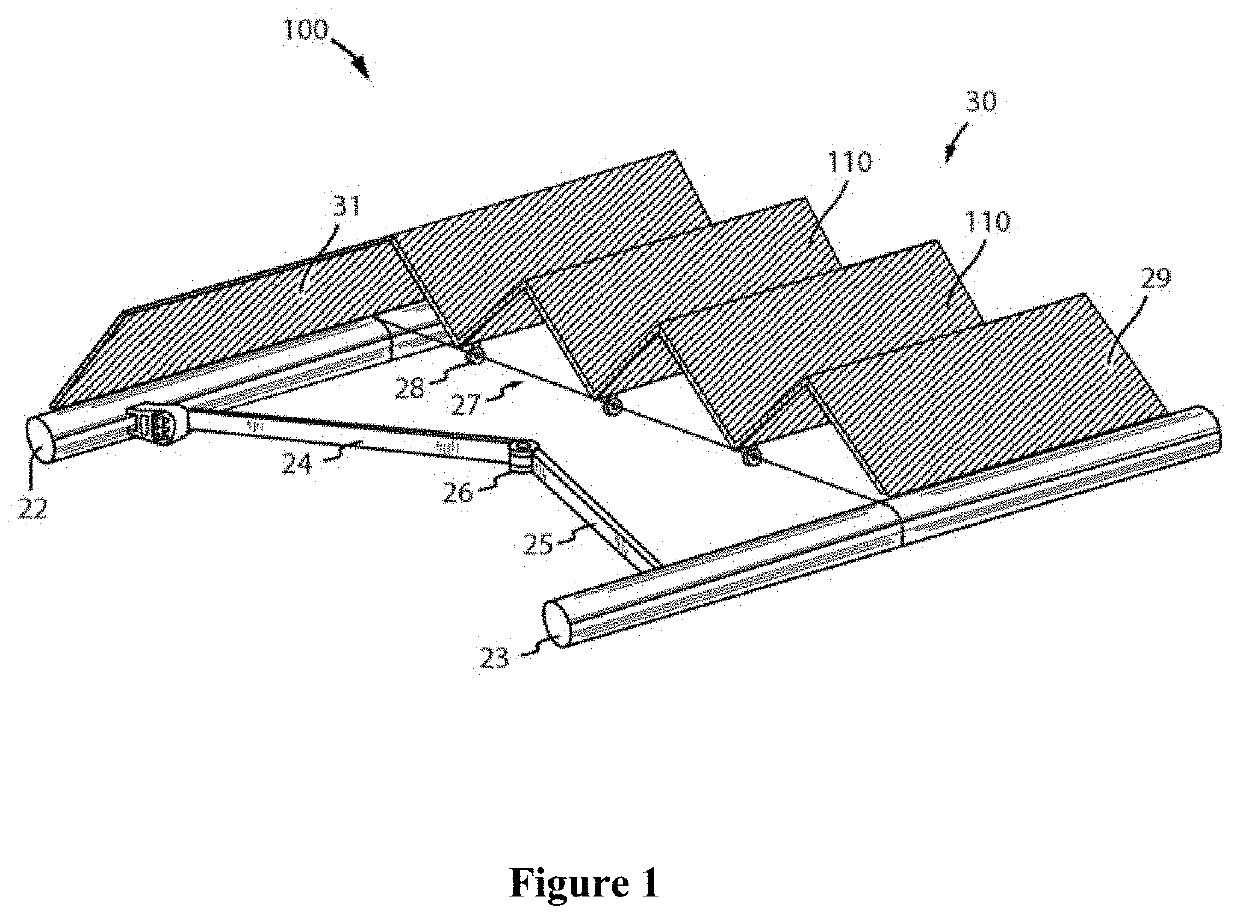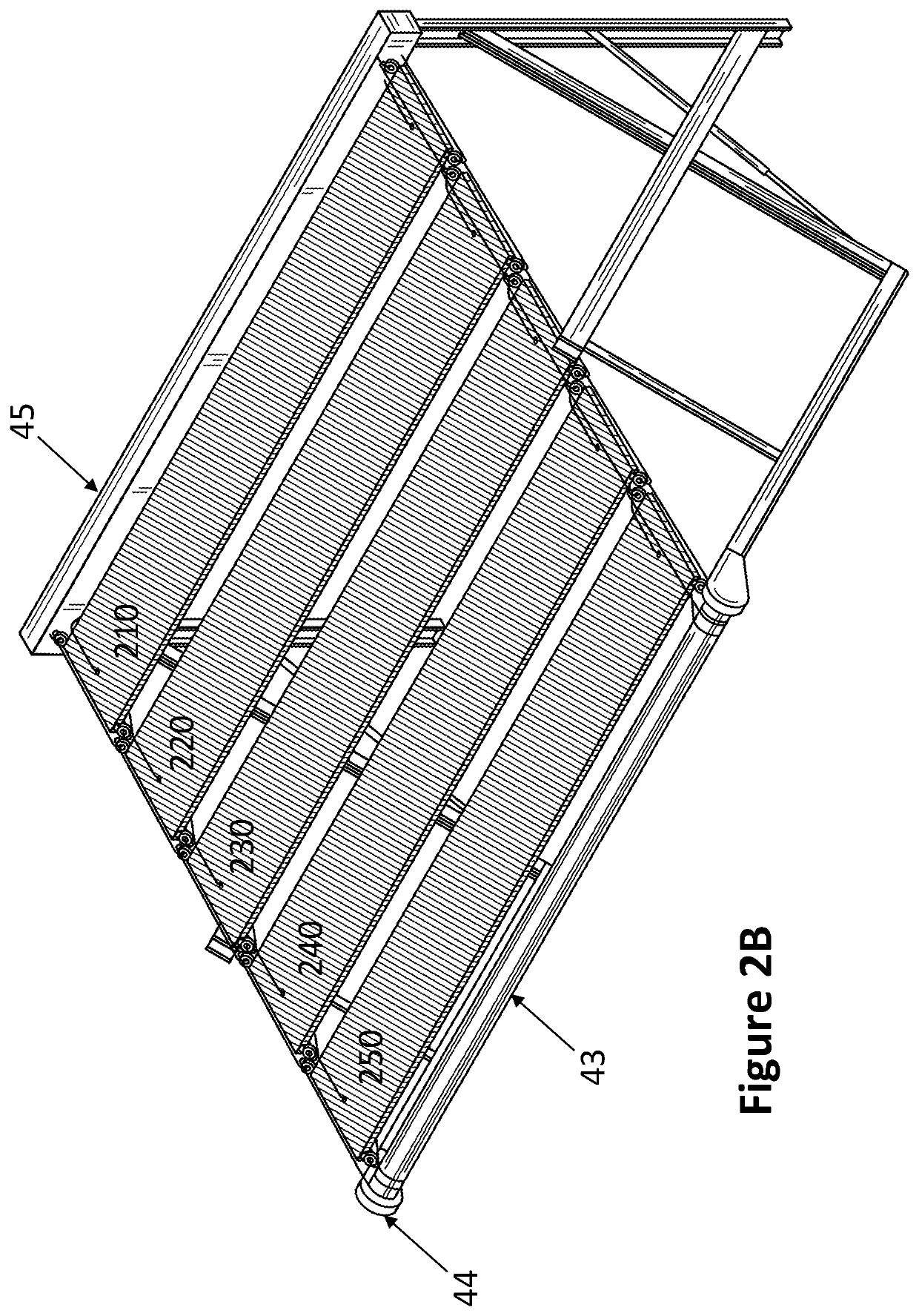Innovative Energy Generating Photovoltaic Awning
- Summary
- Abstract
- Description
- Claims
- Application Information
AI Technical Summary
Benefits of technology
Problems solved by technology
Method used
Image
Examples
Embodiment Construction
[0029]The present invention provides a unique, smart and commercially deployable, expandable solar awning and canopy systems.
[0030]Awnings or canopies are contemplated that have a base and a leading arm. The base is typically coupled to a surface, for example the eave or roof of a structure or the side of a vehicle (e.g., RV). A first panel is coupled to the base of the awning and a second panel is coupled to the first panel and the leading arm of the awning. It is contemplated that the panel can be made of polymers, glass, wood, metal, or combinations or composites thereof, and can further incorporate functional elements, such as lights, sensors, heaters, acoustic devices, displays, or photovoltaic cells. In preferred embodiments, the panels are at least partly photovoltaic panels, preferably mostly photovoltaic panels, and more preferably predominantly photovoltaic panels. In some embodiments, photovoltaic cells make up at least 60% of a surface of the panels, preferably at least ...
PUM
 Login to View More
Login to View More Abstract
Description
Claims
Application Information
 Login to View More
Login to View More - R&D Engineer
- R&D Manager
- IP Professional
- Industry Leading Data Capabilities
- Powerful AI technology
- Patent DNA Extraction
Browse by: Latest US Patents, China's latest patents, Technical Efficacy Thesaurus, Application Domain, Technology Topic, Popular Technical Reports.
© 2024 PatSnap. All rights reserved.Legal|Privacy policy|Modern Slavery Act Transparency Statement|Sitemap|About US| Contact US: help@patsnap.com










